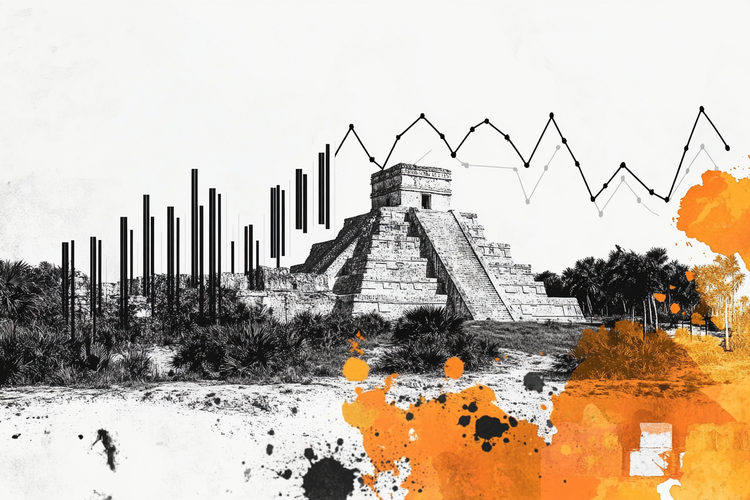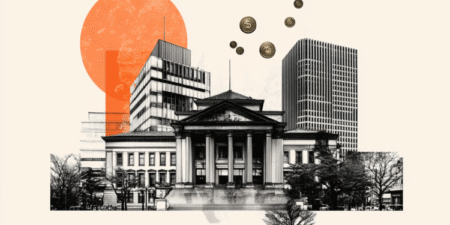- The Mexican Peso gains ground against the US Dollar as Moody’s downgrade of US sovereign debt weighs on the Greenback.
- The Federal Reserve is set to review the discount rate on Monday, potentially influencing short-term funding conditions.
- USD/MXN trades cautiously below the key psychological resistance at 19.50, reflecting broader Dollar weakness.
The Mexican Peso (MXN) remains firm against the US Dollar (USD) as markets react to renewed uncertainty following Moody’s downgrade of the US credit rating. The decision to lower the sovereign rating to AA1 from AAA has prompted a reassessment of the US Dollar’s status. While the MXN slightly benefits from the USD’s weakness, the broader risk-off tone in the market causes the Mexican currency to fall against other peers such as the Euro (EUR), the Pound Sterling (GBP), or the Australian Dollar (AUD).
While the Greenback has retained its global reserve status and safe-haven appeal, mounting concerns over trade tensions, tariff instability, and a deteriorating fiscal outlook are weighing on sentiment. Structural headwinds, including ballooning US debt and subdued growth prospects, have tempered interest rate expectations and contributed to the Greenback’s broad weakness.
At the time of writing, USD/MXN is trading near 19.43, down 0.12% on the day. The former psychological support at 19.50 has now turned into a resistance barrier, with market participants watching to see whether the Peso can sustain its upward momentum.
Mexican Peso daily digest: USD/MXN slides as cautious Fed tone and Moody’s downgrade weigh on the Dollar
- Federal Reserve officials offered a cautious outlook, with Vice Chair for Supervision Philip N. Jefferson, New York Fed President John C. Williams, and Atlanta Fed President Raphael W. Bostic signaling policy vigilance amid fiscal concerns.
- Dallas Fed President Lorie K. Logan and Minneapolis Fed President Neel Kashkari focused on market structure and broader economic risks, factors that continue to influence USD performance against emerging market peers like the Mexican Peso.
- Moody’s became the latest major credit agency to downgrade the US sovereign rating, triggering a rise in Treasury yields and a slump in the DXY US Dollar Index.
- As perceived credit risk rises, the US must offer higher interest rates to attract investors who might otherwise shift capital to alternative safe-haven assets. While rising yields tend to be supportive for the USD, the broader context of fiscal instability has the potential to weigh on the Greenback.
- Comments from Fed speakers throughout the day may provide insights into the trajectory of US monetary policy, influencing the performance of the US Dollar against global counterparts, including USD/MXN.
- Persistent trade tensions between Mexico and the United States continue to create downside risks for the Peso. With roughly 80% of Mexican exports directed toward the US, any disruption or tariff-related uncertainty could magnify market volatility in the pair.
Mexican Peso Technical Analysis: Peso holds gains as USD/MXN consolidates between key levels
USD/MXN remains under pressure, extending its bearish trajectory beneath the descending trendline and the 20-day Simple Moving Average (SMA), currently at 19.55. The pair has failed to clear resistance near the 78.6% Fibonacci retracement level of the October–February rally at 19.578, reinforcing a weak technical outlook.
Price action continues to oscillate within a narrow range, with repeated failures to break higher indicating ongoing downside pressure.
USD/MXN daily chart
The consolidation zone between 19.30 (May low) and 19.72 (23.6% Fib) has acted as a containment range for several weeks. A breakdown below 19.30 could open the door toward the October 2024 low at 19.11, while a daily close above 19.72 would be needed to suggest a shift in sentiment and challenge the next key level at 19.98 (38.2% Fib).
The Relative Strength Index (RSI) at 40.06 remains subdued, supporting the bearish bias while signaling a lack of upward momentum.
US Dollar FAQs
The US Dollar (USD) is the official currency of the United States of America, and the ‘de facto’ currency of a significant number of other countries where it is found in circulation alongside local notes. It is the most heavily traded currency in the world, accounting for over 88% of all global foreign exchange turnover, or an average of $6.6 trillion in transactions per day, according to data from 2022.
Following the second world war, the USD took over from the British Pound as the world’s reserve currency. For most of its history, the US Dollar was backed by Gold, until the Bretton Woods Agreement in 1971 when the Gold Standard went away.
The most important single factor impacting on the value of the US Dollar is monetary policy, which is shaped by the Federal Reserve (Fed). The Fed has two mandates: to achieve price stability (control inflation) and foster full employment. Its primary tool to achieve these two goals is by adjusting interest rates.
When prices are rising too quickly and inflation is above the Fed’s 2% target, the Fed will raise rates, which helps the USD value. When inflation falls below 2% or the Unemployment Rate is too high, the Fed may lower interest rates, which weighs on the Greenback.
In extreme situations, the Federal Reserve can also print more Dollars and enact quantitative easing (QE). QE is the process by which the Fed substantially increases the flow of credit in a stuck financial system.
It is a non-standard policy measure used when credit has dried up because banks will not lend to each other (out of the fear of counterparty default). It is a last resort when simply lowering interest rates is unlikely to achieve the necessary result. It was the Fed’s weapon of choice to combat the credit crunch that occurred during the Great Financial Crisis in 2008. It involves the Fed printing more Dollars and using them to buy US government bonds predominantly from financial institutions. QE usually leads to a weaker US Dollar.
Quantitative tightening (QT) is the reverse process whereby the Federal Reserve stops buying bonds from financial institutions and does not reinvest the principal from the bonds it holds maturing in new purchases. It is usually positive for the US Dollar.
Read the full article here
















